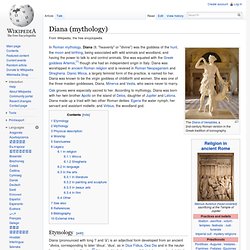

Lethe. In Greek mythology, Lethe (Greek: Λήθη, Lḗthē; Classical Greek [lɛː́tʰɛː], modern Greek: [ˈliθi]) was one of the five rivers of Hades.

Also known as the Ameles potamos (river of unmindfulness), the Lethe flowed around the cave of Hypnos and through the Underworld, where all those who drank from it experienced complete forgetfulness. Lethe was also the name of the Greek spirit of forgetfulness and oblivion, with whom the river was often identified. In Classical Greek, the word lethe literally means "oblivion", "forgetfulness", or "concealment".[1] It is related to the Greek word for "truth", aletheia (ἀλήθεια), which through the privative alpha literally means "un-forgetfulness" or "un-concealment".
Mythology[edit] River[edit] Lethe, the river of forgetfulness, was one of the five rivers of the Greek underworld, the other four being Styx (the river of hate), Akheron (the river of sorrow), Kokytos (the river of lamentation) and Phlegethon (the river of fire). Goddess[edit] Real rivers[edit] Anemoi. Wind rose as known in ancient Greece, created by the scholar Adamantios Korais around 1796 In ancient Greek religion and myth, the Anemoi (Greek: Ἄνεμοι, "Winds")[n 1] were Greek wind gods who were each ascribed a cardinal direction from which their respective winds came (see Classical compass winds), and were each associated with various seasons and weather conditions.

They were sometimes represented as mere gusts of wind, at other times were personified as winged men, and at still other times were depicted as horses kept in the stables of the storm god Aeolus, who provided Odysseus with the Anemoi in the Odyssey. The Spartans were reported to sacrifice a horse to the winds on Mount Taygetus.[2] Astraeus, the astrological deity sometimes associated with Aeolus, and Eos, the goddess of the dawn, were the parents of the Anemoi, according to the Greek poet Hesiod. The deities equivalent to the Anemoi in Roman mythology were the Venti (Latin, "winds"). Boreas[edit] Aquilo[edit] Notus[edit] Diana (mythology) Diana (pronounced with long 'ī' and 'ā') is an adjectival form developed from an ancient *divios, corresponding to later 'divus', 'dius', as in Dius Fidius, Dea Dia and in the neuter form dium meaning the sky.[2] It is rooted in Indoeuropean *d(e)y(e)w, meaning bright sky or daylight, from which also derived the name of Vedic god Dyaus and the Latin deus, (god), dies, (day, daylight), and " diurnal", (daytime).

On the Tablets of Pylos a theonym διϝια (diwia) is supposed as referring to a deity precursor of Artemis. Modern scholars mostly accept the identification.[3][need quotation to verify] The ancient Latin writers Varro and Cicero considered the etymology of Dīāna as allied to that of dies and connected to the shine of the Moon. The persona of Diana is complex and contains a number of archaic features.
According to Georges Dumézil[4] it falls into a particular subset of celestial gods, referred to in histories of religion as frame gods. F. Hyacinth (mythology) Hyacinth /ˈhaɪəsɪnθ/ or Hyacinthus (in Greek, Ὑάκινθος, Hyakinthos) is a divine hero from Greek mythology.

His cult at Amyclae, southwest of Sparta, dates from the Mycenaean era. The sanctuary (temenos) grew up around his burial mound (tumulus), located in the Classical period at the feet of Apollo's statue.[1] The literary myths serve to link him to local cults, and to identify him with Apollo. In Greek mythology, Hyacinth was given various parentage, providing local links, as the son of Clio and Pierus, King of Macedon, or of king Oebalus of Sparta, or of king Amyclas of Sparta,[2] progenitor of the people of Amyclae, dwellers about Sparta.
His cult at Amyclae, where his tomb was located, at the feet of Apollo's statue, dates from the Mycenaean era. Thamyris is said by Pseudo-Apollodorus of Athens to have been a lover of Hyacinth and thus to have been the first man to have loved another male.[7] Gantz, Timothy (1993). Collected classical references to Hyacinthus.